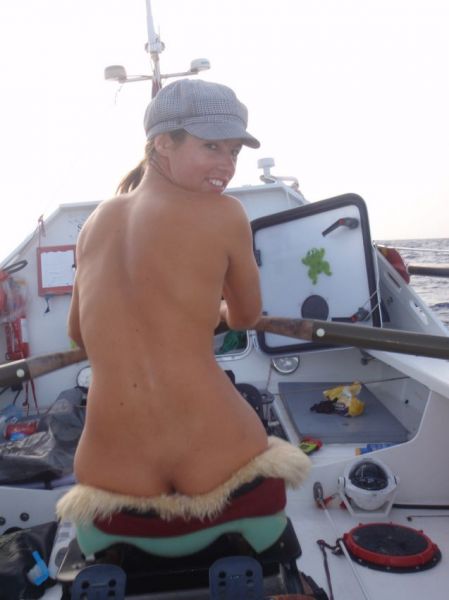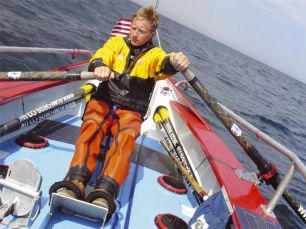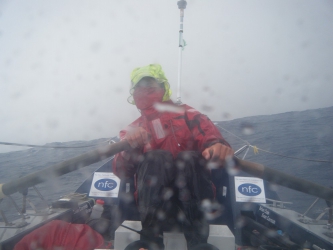Let’s get this out of the way early on! Most ocean rowers sit down with uncovered bums on their seats and sometimes with even more exposed. Of course the choice of whether or not to row completely naked generally depends on the temperature and weather conditions at the time. For the Great Pacific Race we have found that crews need a significant distance south before considering stripping off.
The reason for this nudity is that as waves splash the rower, any clothing will get coated in salt water. This will then dry out leaving solid salt crystals impregnated into the clothing. During the rowing movement the salt acts like sandpaper and chaffs, rubbing the skin and causing painful open sores and blisters.
It’s best to wait until you’re a few hours into your ocean row before stripping off as those supporters and friends who have chartered a yacht to wave you off will be unable to take many good photos they could show to anyone else if you’re in your birthday suit! It’s also considered decent to put some clothing on again as you enter the final few miles of a row as etiquette dictates that the ocean rower arriving wears some sort of clothing. The rest of the time though is generally spent in various stages of nudity depending on weather conditions and how comfortanly you are with your crew. When it rains, is cold or windy, chaffing is generally accepted as preferable to being very cold or very wet. You will need clothing suited to each of these occasions. Standard base layers are perfect for cold weather and for the wet weather, foul weather gear (or foulies) are perfect.
In terms of base layers, natural fibers such as Merino wool tend to be preferred especially by those in a crew of more than one as they smell less and dry faster than most similar synthetic fabrics. One thing to look out for is a design which is seamless. Any seam can rub against the skin causing more irritation so seamless clothing is definitely beneficial.
Unfortunately it’s not going to be calm and sunny for the total duration of you trip. Some form of waterproof clothing is highly recommended for any trip and in some cases is compulsory, as keeping dry is the first step to staying warm. Having a decent hood that keeps the rain off your head and eyes is essential, as it can rain seriously hard when out at sea in a storm. Remember that whilst wearing your waterproofs you’ll also be rowing so anything that restricts movement or isn’t breathable is not advised. Some other functional elements of foulies are storm cuffs and waterproof collars to stop water getting into the jacket. When deciding which design of waterproof top to go for remember that you’ll want to be able to get it on or off quickly and sometimes while you’re still inside the cabin. This can be particularly difficult as cabins are quite small and so a jacket with a full length zip instead of one with only a short zip at the neck is preferred. Whilst the zip may eventually let in a little water, it’s not going to be much. This is preferable to trying to wrestle yourself into a smock whilst inside the cabin.
Technical marine clothing (Foul weather gear / waterproofs)
Base layers
- Icebreaker – Merrino wool base layers (chafe free and non-smelly)
- O’Neil – Rash vests


